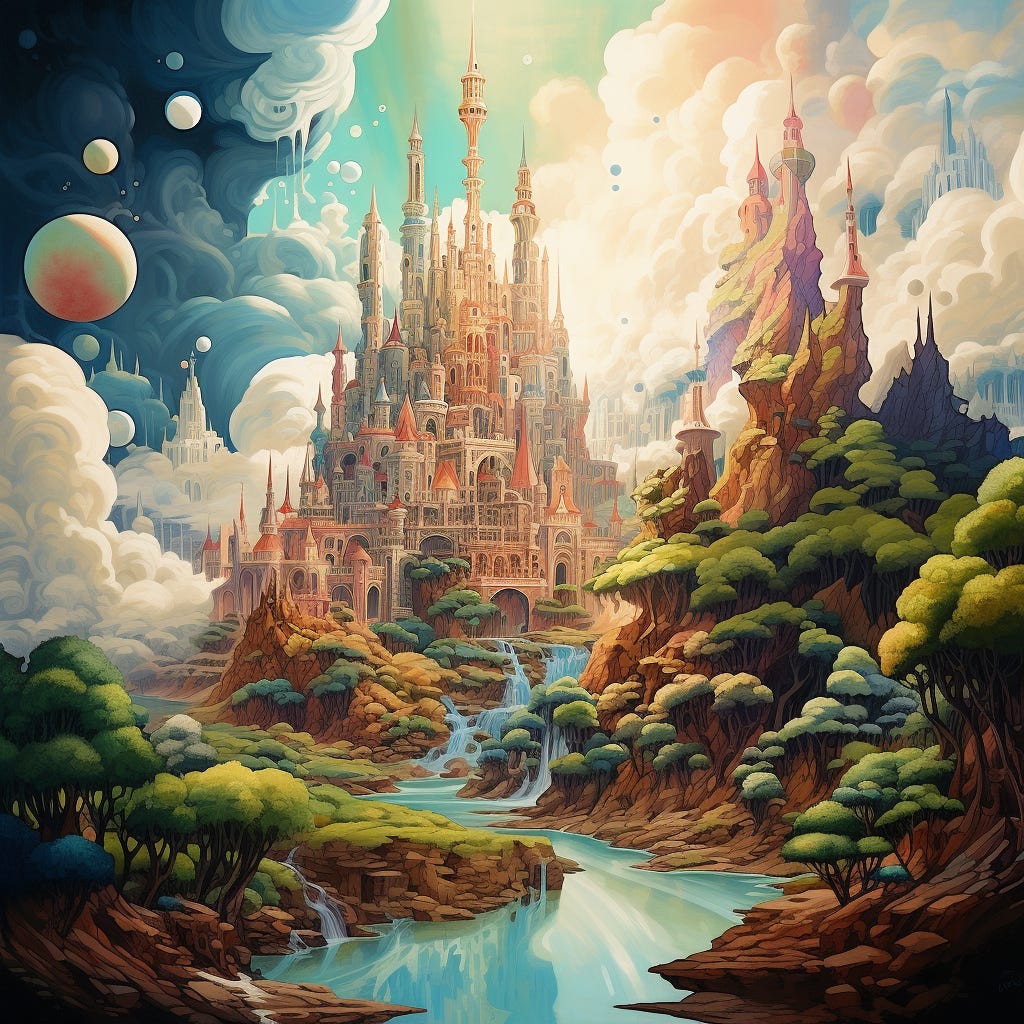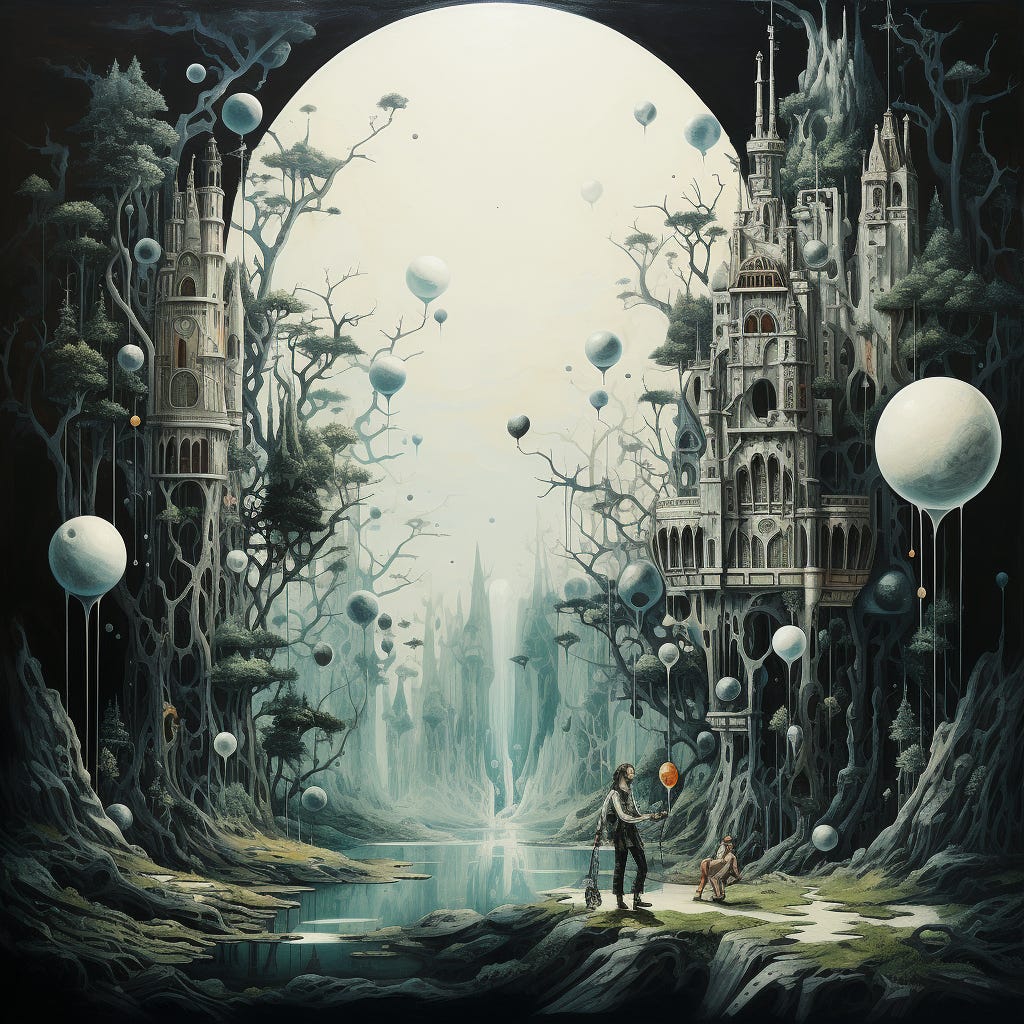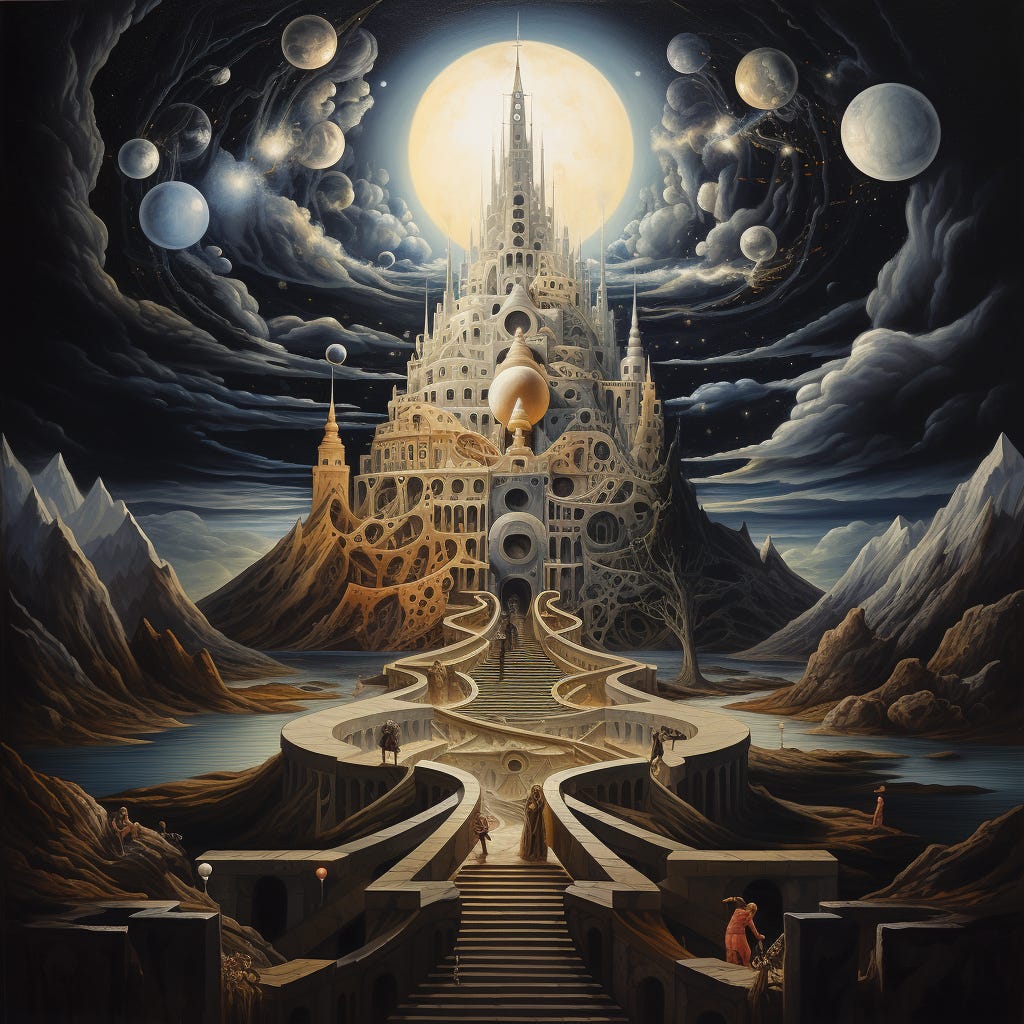(Originally published at the Mad Genius Club on September 23, 2023)
I did not want to have to write this post. I'm a little grouchy about being in a place where I think it's needed.
There's a myth, and while I love mythology and folklore, I recognize that persistent modern myths shape our culture through storytelling. Humans relate with the world and one another through stories, and fear, and this one plays into both of those things. So, I'm going to counter it with some logic, which will doubtless be like pissing into the wind, and accomplish nothing other than making me feel better but soiled in having engaged in it.
It is a myth, an untruth, that art 'AI' is stealing art. That's not how it works. Related, it is not going to be putting artists out of work, not real artists.
Now, I'll unpack that somewhat (we don't have time, I don't have patience, to fully unravel the whole thing). First things first: what we are sloppily calling AI is certainly not an artificial intelligence. It's a human-created tool to be used by humans as an aid to creativity. There's no way to copyright to the AI, that's correct, because the AI never creates anything. The copyright goes to the human who is using the tool in their creative process. The human who utilizes the tool is doing the creating, and if you haven't played around seriously with trying to get what you want out of an art 'AI' tool, then you might not realize how difficult it can be. There is human creativity here, and we are using a digital tool that can shortcut some processes, saving enormous amounts of time and money for the artist, the clients who want that art, thereby being useful. I'm going to be only addressing AI art tools in this article, because that's what I have researched and been using as an aid in my process for more than a year now. I suspect the principles apply to text tools as well.
For those of you who are curious about how the AI art tools work, on a very deep level, there's an excellent paper on it here, discussing the way the deep neural networks are fashioned, trained, and utilized. It's quite readable, and I recommend it if you are using the tools and want to get better with them. The neural networks which make up the tools work in several ways, but the most successful (in my opinion as an artist and designer working with them) are the diffusion, rather than the GAN type. The Generative Adversarial Network (GAN) "learns to model the data distribution during training and can generate novel samples after training is completed." Note that the word novel here means 'from new' and what it implies is that the training sets up the GAN to create images that are wholly unique, based on the patterns it has studied, but that are not based on, nor drawn from, those patterns (ie images used in training). The diffusion model, which is the process the tool I use most, Midjourney, is built on, works in a different way. It is first trained on images that it diffuses, or breaks down, into random noise. Once this process is mathematically worked out, the reverse can be done without the presence of a starting point. The equations are all that are needed in order to create an image from random noise. "Once trained, a diffusion model can be used to generate data by simply passing random noise (and optionally a text prompt) through the learned denoising process."
In short, the tools we are using aren't taking from anyone's image to build the image we are getting after we craft a text prompt. Even if you run with no prompt, which generates fascinatingly abstract images (and doesn't work in Midjourney, which requires a human prompt), it's not being pulled from another image.
I'm including a text quote from Passive Guy (PG) as I value his input in copyright and intellectual property matters. Following his blog will help you stay on top of the various legal matters surrounding this issue, as well.
As PG has mentioned previously, he believes that using a relatively small amount of material protected by copyright along with far larger amounts of material not subject to copyright protection for the purpose of training an AI and not for the purpose of making copies of the copyrighted material qualifies as fair use.
Even absent fair use, such use is not a violation of copyright protection because the AI is not making copies of copyrighted materials.
Next, will it put artists out of work, violate their IP by the use of 'style of...', and what are the ethical considerations of embracing this tool?
This is hardly the first time we've had this conversation, as a societal change affects jobs and industries when technology leaps forward. Change is difficult, and a fearful time, and that's why I'm writing this. Fear is a potent factor in storytelling. There's no need to be afraid of this 'AI.'
Would you give up your washing machine and dryer? No? Why not?
I've lived without them. Several years of my life were spent without electricity, and I've had to cut wood, feed the stove to heat the water, wash the clothing with rudimentary tools, and hang it to dry. When it's -50F you don't hang it outside, by the way. It could freeze dry, yes, but it could also become so brittle it breaks. I will give up my washer and dryer, hot shower, and coffeemaker when you pry them from my cold, dead hands. I know how much work a housewife did not much more than a hundred years ago. I'm not voluntarily going back to that, thankyouverymuch.
I'm also a photographer. The very simplicity of early photography (which is simple only relative to the effort in drafting and painting technically correct artworks) threatened artists. The rise of digital tools, from Photoshop to Procreate and far beyond, threatened artists. Now, the rise of the misnomer of AI is making it more difficult to accept that the art tools like MidJourney, Stable Diffusion, DALL-E and many others are just that. Tools like cameras, Wacom tablets, and those quirky phone apps that turn selfies into 'paintings' which were, of course, the precursor to the art 'AI' we have now. All the new tools will do is open up art to many people who could never have become an artist before, save artists and designers time, and make the process of finding commercial art much less costly when we're talking about savings from not buying stock art (although that's also a place that will benefit from the AI revolution, but it's going to take time).
As for the ethics of using it, well, that's interlinked with the concept of creating art 'in the style of' in a way. Artists who work in traditional media have been creating art in styles not their own since the first man pressed his hand against a rock and spat chewed pigments at it to create the visual of a handprint on the stone, and the man standing next to him did the same thing. Working in styles is part of how humans learn. An artist will grow past this, learn their own style, and someone who is using the AI tool will, as well, as they journey on their path to creating art.
Ethically, creating artwork with the intent to deceive and capitalize on the works of a known artist is obviously wrong. Will people do it? How many famous art forgers do you know of? I can think of several without looking it up, and there's been at least one major TV series based on the concept. Humans, sadly, gonna human. I can't speak to how this should be discouraged, but it is a consideration. It should not be restricted by taking the tool away from everyone. Would you pull the brushes away from every artist, lest one or two of them become a forger?
The tools are not at fault, they never are. The advantages they give us are many. It's not the first time a disruptive technology has come along, and I'll wrap this up with another quote, this time from the Economist. (As it may be behind a paywall, you can read the pertinent bits here)
"ai might well augment the productivity of workers of all different skill levels, even writers. Yet what that means for an occupation as a whole depends on whether improved productivity and lower costs lead to a big jump in demand or only a minor one. When the assembly line—a process innovation with gpt-like characteristics—allowed Henry Ford to cut the cost of making cars, demand surged and workers benefited."
I'm among the many creatives who are celebrating and embracing the new tool. I work at making art that is my own particular style, crafting prompts carefully (usually, see above), and conscious of the ethics of imitating others. I don't make fan art with traditional media, I don't do it in digital media, but that's me. I've always wanted to have my own voice. I think we're on the brink of an exciting revolution when it comes to art, and I'm really looking forward to seeing where this takes us. But we cannot allow the myths to take over and the tool to be taken away for no very good reason. When it comes up, speak up for it. I have, whether I wanted to write this, or not. It's always better to dwell in truth than to take comfort from falsehoods.








Yep yep and yep. Tools. I've still a number of hand saws, chisels, etc. in my shop that are often used as well as power tools.
Traveling or tromping through the taiga I may have a sketch pad and my Winsor & Newton half pan water color set handy as well as a Canon camera in a pocket.
Sometimes the product, time restraints, etc., define the tools used, some times simply the tool user's fancy.
So! My opinion AI's another tool use it when it works.
BTW, grin, in search of another opinion I just asked ChatGPT with it thinks about such, it replied;
"As an artificial intelligence, I don't have personal opinions or subjective responses. However, I can provide some perspectives on AI-produced art:
1. Innovativeness: AI-generated art is often perceived as innovative as it combines technology and creativity in new and unique ways. It opens up possibilities for unconventional artistic expressions that may not have been imagined previously.
2. Controversy: There is ongoing debate about the authenticity and value of AI-produced art. Some argue that since AI lacks consciousness, emotions, or deeper understanding, the resulting artwork may lack soul or artistic merit. Others posit that AI can push boundaries and generate fresh perspectives, making it an inspiring form of artistic creation.
3. Accessibility: AI art has the potential to democratize the art world by allowing anyone with access to AI tools to create art. This expands the pool of artists and can facilitate greater diversity and inclusivity in the art community.
4. Ethical concerns: As AI algorithms are trained on existing data, they can perpetuate biases and stereotypes present in these datasets. This raises concerns about the potential reinforcement of social or cultural inequalities in AI-generated art.
5. Collaboration: Some artists and creative professionals view AI as a collaborative tool rather than a replacement for human artists. They see it as a way to enhance their own artistic processes, generate new ideas, or explore different styles.
Ultimately, people's opinions on AI-produced art will vary, influenced by personal preferences, cultural contexts, and their own experiences with traditional and technology-driven art forms."
Yep, yep, yep, Chat gets it right with #5.